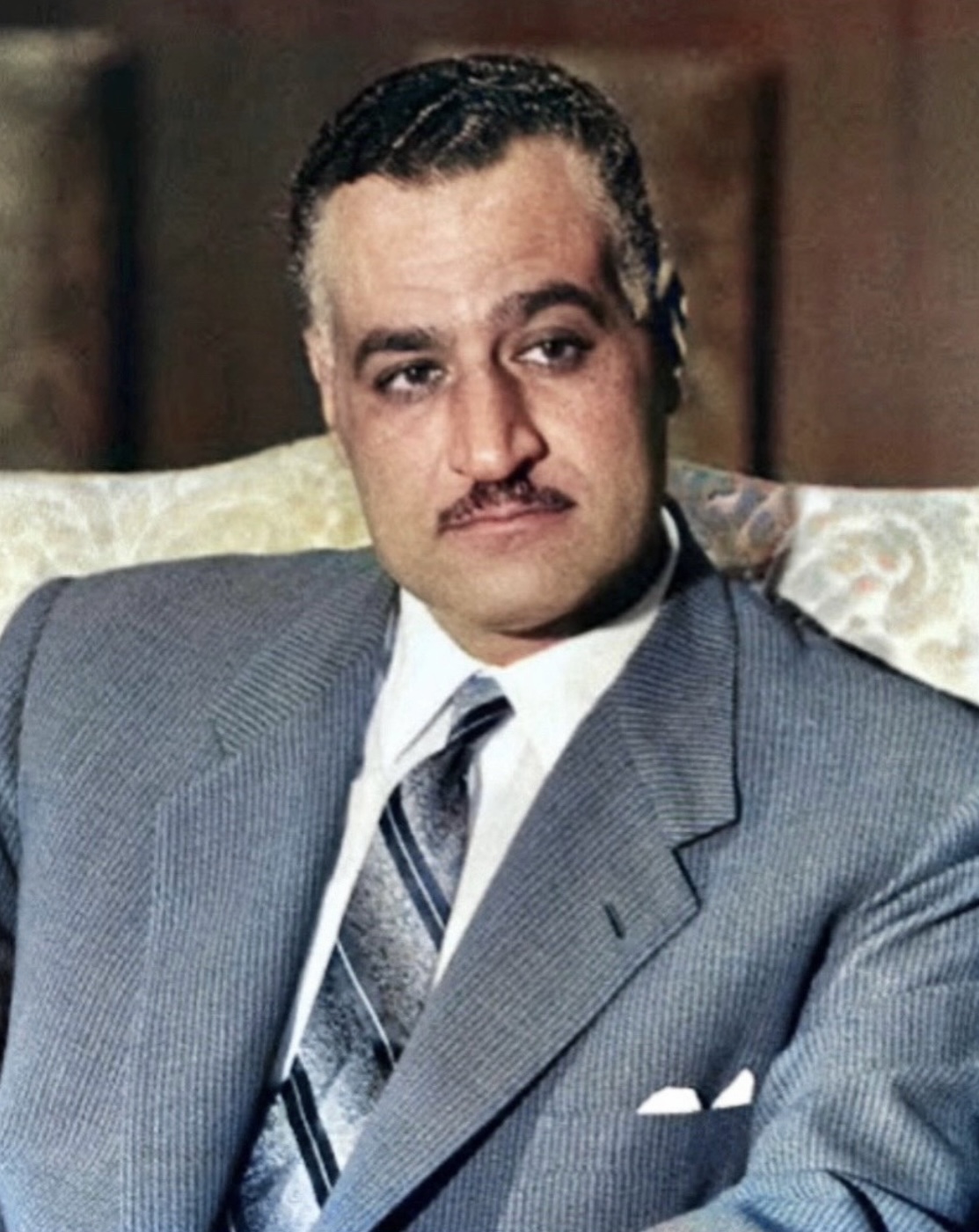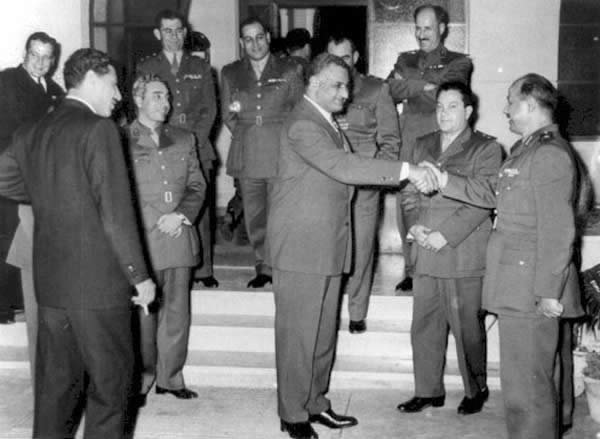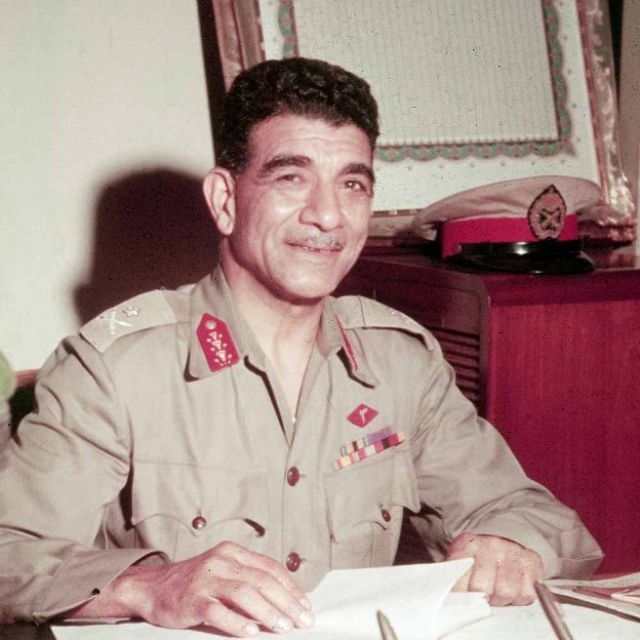|
Federation Of Arab Republics
The Federation of Arab Republics (FAR; , , ) was an unsuccessful attempt by Muammar Gaddafi to merge Libya, Egypt and Syria in order to create a unified Arab state. Although approved by a referendum in each country on 1 September 1971, the three countries disagreed on the specific terms of the merger. The federation lasted from 1 January 1972 to 19 November 1977. History In 1969, Arab nationalist military officers seized power in Libya. The ideological influence of Egyptian President Gamal Abdel Nasser over the new Libyan government was immediately apparent. The administration was immediately recognized by the Arab nationalist governments in Egypt, Iraq, Sudan and Syria with Egypt sending experts to aid Libya's inexperienced government. Gaddafi propounded Pan-Arab ideas, proclaiming the need for a single Arab state stretching across North Africa and the Middle East. In December 1969, Libya founded the Arab Revolutionary Front with Egypt and Sudan as a step towards polit ... [...More Info...] [...Related Items...] OR: [Wikipedia] [Google] [Baidu] |
Arab Cold War
The Arab Cold War ( ''al-ḥarb al-`arabiyyah al-bāridah'') was a political rivalry in the Arab world from the early 1950s to the late 1970s and a part of the wider Cold War. It is generally accepted that the beginning of the Arab Cold War is marked by the 1952 Egyptian revolution, Egyptian Revolution of 1952, which led to Gamal Abdel Nasser becoming president of Egypt in 1956. Thereafter, newly formed Arab republics, inspired by revolutionary secular Arab nationalism, nationalism and History of Egypt under Gamal Abdel Nasser, Nasser's Egypt, engaged in political rivalries with conservative Traditionalist conservatism, traditionalist Arab monarchies, influenced by Saudi Arabia. The Iranian revolution, Iranian Revolution of 1979, and the ascension of Ruhollah Khomeini, Ayatollah Ruhollah Khomeini as leader of Iran, is widely seen as the end of this period of internal conflicts and rivalry. A new era of Iran–Saudi Arabia proxy conflict, Arab-Iranian tensions followed, overshadow ... [...More Info...] [...Related Items...] OR: [Wikipedia] [Google] [Baidu] |
Federal National Assembly
The Federal National Assembly () was the parliament of the Federation of Arab Republics. The assembly included representatives from Egypt, Libya and Syria. The assembly was responsible for examining and ratifying legislation for the Federation, approving budgets and ratifying treaties. Each of the member republics was represented by 20 members in the Federal National Assembly, elected amongst the members of its People's Assembly. Members were elected on four year mandates. Members elected had to resign from their mandates in their republican parliaments. The Federal National Assembly met twice a year, opening its inaugural session on March 12, 1972 and holding its last session in October 1975. The sessions lasted for three months. Elections ;Egypt The People's Assembly of Egypt elected the 20 members Egyptian members of the Federal National Assembly. One of the elected members was Dr. Abdul Hamid Hassan, former student union leader and member of the Arab Socialist Union Central ... [...More Info...] [...Related Items...] OR: [Wikipedia] [Google] [Baidu] |
United Arab Republic
The United Arab Republic (UAR; ) was a sovereign state in the Middle East from 1958 to 1971. It was initially a short-lived political union between Republic of Egypt (1953–1958), Egypt (including Occupation of the Gaza Strip by the United Arab Republic, Egyptian-governed Gaza) and Second Syrian Republic, Syria from 1958 until Syria seceded from the union following the 1961 Syrian coup d'état. Egypt continued to be known officially as the United Arab Republic until it was formally dissolved by Anwar Sadat in September 1971. The republic was led by Gamal Abdel Nasser as the President of Egypt, Egyptian president. The UAR was a member of the United Arab States, a loose confederation with the Kingdom of Yemen, Mutawakkilite Kingdom of Yemen, which was dissolved in 1961. It was a brief pan-Arab union. History Origins The United Arab Republic was established on 1 February 1958 as the first step towards a larger Pan-Arabism, pan-Arab state, originally being proposed to Egyptian ... [...More Info...] [...Related Items...] OR: [Wikipedia] [Google] [Baidu] |
Diplomatic Recognition
Diplomatic recognition in international law is a unilateral declarative political act of a state that acknowledges an act or status of another state or government in control of a state (may be also a recognized state). Recognition can be accorded either on a '' de facto'' or ''de jure'' basis. Partial recognition can occur if many sovereign states refuse to recognize an entity as a peer. Recognition can be a declaration to that effect by the recognizing government or may be implied from an act of recognition, such as entering into a treaty with the other state or making a state visit. Recognition may, but need not, have domestic and international legal consequences. If sufficient countries recognize a particular entity as a state, that state may have a right to membership in international organizations, while treaties may require all existing member countries unanimously agreeing to the admission of a new member. A vote by a country in the United Nations in favour of the mem ... [...More Info...] [...Related Items...] OR: [Wikipedia] [Google] [Baidu] |
Gamal Abdel Nasser
Gamal Abdel Nasser Hussein (15 January 1918 – 28 September 1970) was an Egyptian military officer and revolutionary who served as the second president of Egypt from 1954 until his death in 1970. Nasser led the Egyptian revolution of 1952 and introduced Land reform in Egypt, far-reaching land reforms the following year. Following a 1954 Attempted assassination of Gamal Abdel Nasser, assassination attempt on his life by a Muslim Brotherhood member, he cracked down on the organization, put President Mohamed Naguib under house arrest and assumed executive office. He was 1956 Egyptian referendum, formally elected president in June 1956. Nasser's popularity in Egypt and the Arab world skyrocketed after his Suez Canal Authority, nationalization of the Suez Canal and his political victory in the subsequent Suez Crisis, known in Egypt as the ''Tripartite Aggression''. Calls for Arab Union, pan-Arab unity under his leadership increased, culminating with the formation of the United Ar ... [...More Info...] [...Related Items...] OR: [Wikipedia] [Google] [Baidu] |
President Of Egypt
The president of the Arab Republic of Egypt () is the executive head of state of Egypt and the de facto appointer of the official head of government under the Egyptian Constitution of 2014. Under the various iterations of the History of the Egyptian Constitution, Constitution of Egypt following the Egyptian Revolution of 1952, the president is also the Commander-in-chief#Egypt, supreme commander of the Armed Forces, and head of the executive branch of the Cabinet of Egypt, Egyptian government. Six presidents took over the presidency of Egypt after the abolition of the Muhammad Ali dynasty, monarchy in 1953, in periods that included short transitional periods. They began with Mohamed Naguib, then Gamal Abdel Nasser, and Anwar Sadat. He was followed by Hosni Mubarak, and then Mohamed Morsi. The current president is Abdel Fattah el-Sisi, Field Marshal Abdel Fattah el-Sisi, who has been in office since 8 June 2014. History The first president of Egypt was Mohamed Naguib, who, along ... [...More Info...] [...Related Items...] OR: [Wikipedia] [Google] [Baidu] |
Nasserism
Nasserism ( ) is an Arab nationalism, Arab nationalist and Arab socialism, Arab socialist List of political ideologies, political ideology based on the thinking of Gamal Abdel Nasser, one of the two principal leaders of the Egyptian Revolution of 1952, and Egypt's second President of Egypt, President. Spanning the domestic and international spheres, it combines elements of Arab socialism, republicanism, secularism, nationalism, anti-imperialism, Developing country, developing world solidarity, Pan-Arabism, and Non-Aligned Movement, international non-alignment. According to Mohamed Hassanein Heikal, Nasserism symbolised "the direction of liberation, socialist transformation, the people’s control of their own resources, and the democracy of the peoples working forces." Many other Arab countries have adopted Nasserist forms of government during the 20th century, most being formed during the 1960s, including Algeria under the National Liberation Front (Algeria), FLN and the Libya ... [...More Info...] [...Related Items...] OR: [Wikipedia] [Google] [Baidu] |
1969 Libyan Revolution
The 1969 Libyan revolution, also known as the al-Fateh Revolution or 1 September Revolution, was a coup d'état and revolution carried out by the Free Officers Movement, a group of Arab nationalist and Nasserist officers in the Libyan Army, which overthrew the Senussi monarchy of King Idris I and resulted in the formation of the Libyan Arab Republic. The Free Officers Movement was led by Colonel Muammar Gaddafi. The government of Idris was increasingly unpopular by the late 1960s due to internal mismanagement, and the rise of Arab nationalist sentiment further weakened his regime. On 1 September 1969, while Idris was in Turkey, a group of Libyan Army officers under the leadership of Gaddafi launched a coup from Benghazi and quickly established control over the country. The coup was bloodless and received enthusiastic support from the public. Crown prince Hasan as-Senussi relinquished his claim to the throne, and Libya was declared a free and sovereign republic by the Rev ... [...More Info...] [...Related Items...] OR: [Wikipedia] [Google] [Baidu] |
Arab Nationalism
Arab nationalism () is a political ideology asserting that Arabs constitute a single nation. As a traditional nationalist ideology, it promotes Arab culture and civilization, celebrates Arab history, the Arabic language and Arabic literature. It often also calls for unification of Arab society.Requiem for Arab Nationalism by Adeed Dawisha, ''Middle East Quarterly'', Winter 2003 It bases itself on the premise that the people of the —from the to the |
Arab Union
The Arab Union is a theoretical political union of the Arab states. The term was first used when the British Empire promised the Arabs a united independent state in return for revolting against the Ottoman Empire, with which the United Kingdom was at war. It never came to fruition following the Sykes–Picot Agreement. Despite this, many in the Arab world have since called for the creation of a pan-Arab state. Egyptian President Gamal Abdel Nasser made several unsuccessful attempts to unite Egypt with other Arab countries (including Iraq and North Yemen), and briefly succeeded in forming the United Arab Republic with Syria in 1958, which dissolved in 1971. The union is considered as one of the solutions to end the Israeli-Palestinian conflict. Similar attempts were made by other Arab leaders, such as Hafez al-Assad, Ahmed Hassan al-Bakr, Faisal I of Iraq, Muammar Gaddafi, Saddam Hussein, Gaafar Nimeiry and Anwar Sadat. Proposals In the 2004 Arab League summit in Cair ... [...More Info...] [...Related Items...] OR: [Wikipedia] [Google] [Baidu] |
History Of Libya Under Muammar Gaddafi
Muammar Gaddafi became the '' de facto'' leader of Libya on 1 September 1969 after leading a group of young Libyan Army officers against King Idris I in a bloodless coup d'état. When Idris was in Turkey for medical treatment, the Revolutionary Command Council (RCC) headed by Gaddafi abolished the monarchy and the constitution and established the Libyan Arab Republic, with the motto " Unity, Freedom, Socialism". The name of Libya was changed several times during Gaddafi's tenure as leader. From 1969 to 1977, the name was the Libyan Arab Republic. In 1977, the name was changed to Socialist People's Libyan Arab Jamahiriya. '' Jamahiriya'' was a term coined by Gaddafi, usually translated as "state of the masses". The country was renamed again in 1986 as the Great Socialist People's Libyan Arab Jamahiriya, after the United States bombing that year. After coming to power, the RCC government initiated a process of directing funds toward providing education, health care and housin ... [...More Info...] [...Related Items...] OR: [Wikipedia] [Google] [Baidu] |
Muammar Gaddafi
Muammar Muhammad Abu Minyar al-Gaddafi (20 October 2011) was a Libyan military officer, revolutionary, politician and political theorist who ruled Libya from 1969 until Killing of Muammar Gaddafi, his assassination by Libyan Anti-Gaddafi forces, rebel forces in 2011. He came to power through a 1969 Libyan revolution, military coup, first becoming Revolutionary Chairman of the Libyan Arab Republic, Revolutionary Chairman of the Libyan Arab Republic from 1969 to 1977 and then the Brotherly Leader and Guide of the Revolution, Brotherly Leader of the Great Socialist People's Libyan Arab Jamahiriya from 1977 to 2011. Initially ideologically committed to Arab nationalism and Arab socialism, Gaddafi later ruled according to his own Third International Theory. Born near Sirte, Italian Libya, to a poor Bedouin Arab family, Gaddafi became an Arab nationalist while at school in Sabha, Libya, Sabha, later enrolling in the Benghazi Military University Academy, Royal Military Academy, ... [...More Info...] [...Related Items...] OR: [Wikipedia] [Google] [Baidu] |






